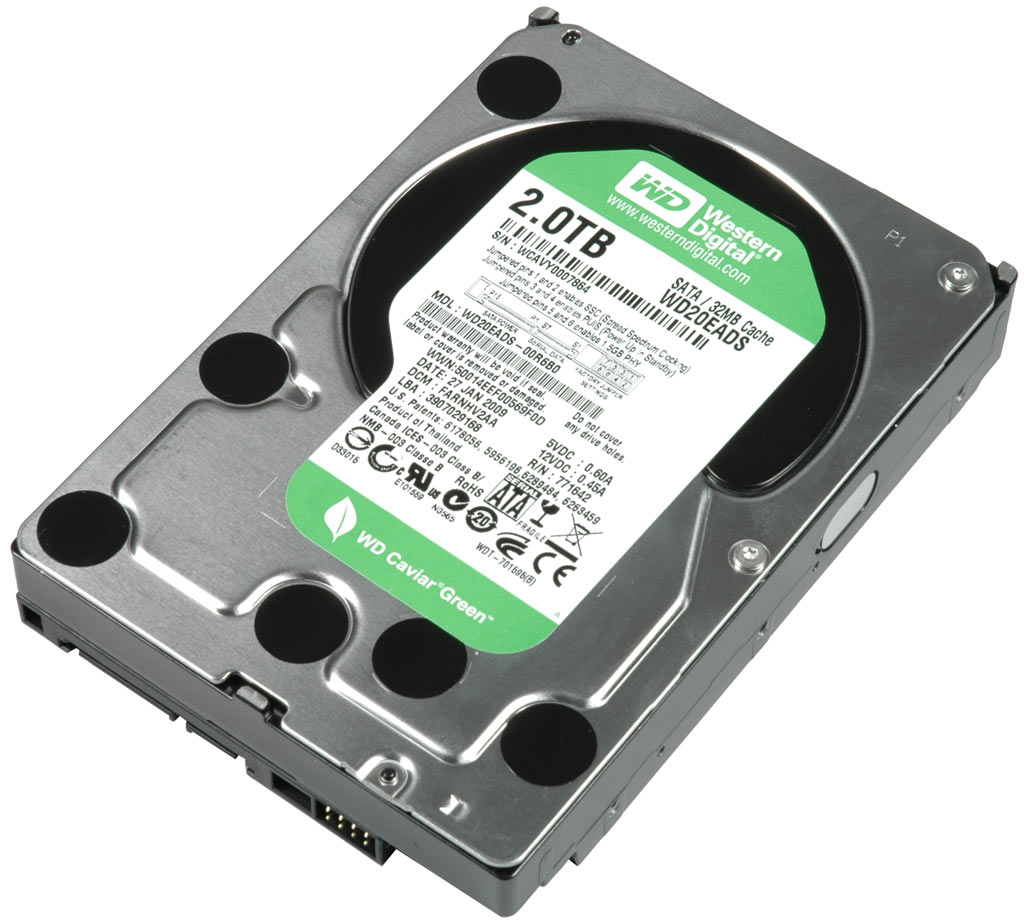New Desktop Hard Drives: Speed Or Capacity?
Western Digital Caviar Green WD20EADS (2 TB)
This is it: the world’s first 2 TB or 2,000 GB hard drive. It is not a high-performance 7,200 RPM drive, but a 5,400 RPM energy-efficient drive, according to Western Digital’s specifications for the Caviar Green WD20EADS. You may still remember our review of the 1 TB version, the WD10EADS, which remains the most energy-efficient terabyte hard drive we have tested. Therefore, our expectations are high.
Still, there are some things to consider. The WD10EADS, for example, is based on three platters, while the WD20EADS utilizes four platters for its full 2 TB of capacity. More moving parts translate into higher power consumption, which is why the new drive cannot beat its 1 TB brother. However, capacity per watt still is much better.
Specifications
All Western Digital desktop drives are based on SATA/300 interfaces with NCQ, and those with capacities of 1 TB or more have 32 MB cache. The operating temperature range was increased from between five degrees Celsius and 55 degrees Celsius to between zero degrees Celsius and 60 degrees Celsius, which is also the case for the two other drives.
Western Digital doesn’t talk about its actual spindle speeds and prefers to refer to IntelliPower, which is the marketing name for the balance between spindle speed, transfer rate, and caching algorithms, as part of its effort to design drives with the best balance between performance and power consumption. Insiders still say the speed is 5,400 RPM.
Power and Performance
The Caviar Green product portfolio is comprehensive, and it leaves out all of the little capacities that aren’t useful for end users, but system integrators seek. Western Digital’s Green drives start at 500 GB, while the high-capacity versions offer capacities of 1.0 TB, 1.5 TB, and 2.0 TB. The 1.5 TB and 2.0 TB drives are the new models, and only these were rated for the operating range stated above.
Get Tom's Hardware's best news and in-depth reviews, straight to your inbox.
The WD20EADS is not one of the most efficient drives, as it is based on four platters. Therefore, its operating temperature reached 39.0 degrees Celsius (102.2 degrees Fahrenheit) after a long idle period, which is higher than the temperatures we observed with the other drives in this review. The throughput maxed out at 102 MB/s, which is a bit less than what Samsung’s Spinpoint F2 EcoGreen reaches. Access time, however, was surprisingly quick at only 13.2 ms. We double-checked our test results several times, but always found the same results: The WD20EADS has great access time and I/O performance despite being a low-power drive.
Current page: Western Digital Caviar Green WD20EADS (2 TB)
Prev Page Seagate Barracuda 7200.12 (500 GB, 750 GB, and 1,000 GB) Next Page Comparison Table and Test Setup

